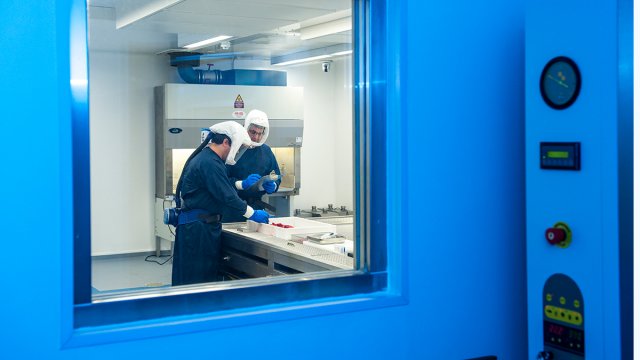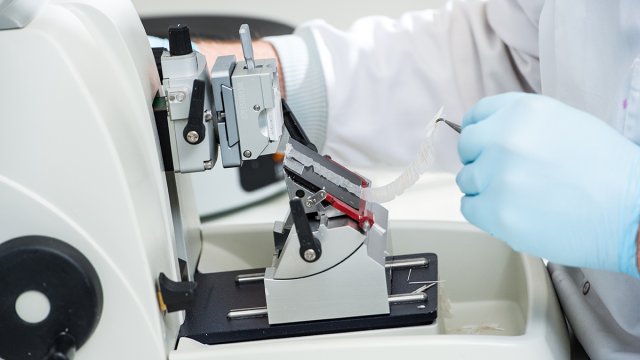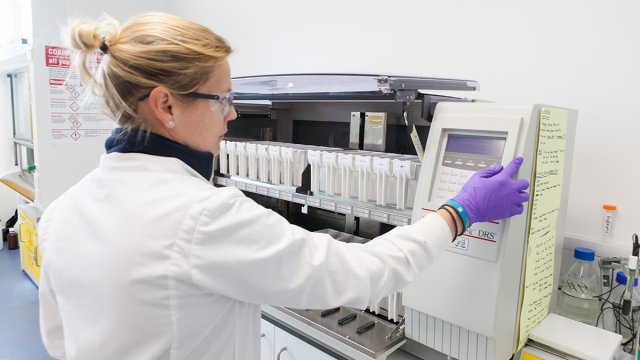Veterinary Pathology Centre
Excellence in veterinary pathology
Located in the Southeast of England, we are one of the UK's largest veterinary pathology centres, offering high-containment post-mortem examination facilities and services and providing a focus for excellence in pathology research, education and commercial activity. Our Centre is staffed by a team of highly-skilled, board-certified veterinary pathologists, veterinary investigation officers and technicians, with expertise in small companion animals, livestock, horses, exotic pets, wildlife, and zoo animal species.

Our facilities
Discover our state-of-the-art post-mortem examination rooms, laboratories and training suites.
Stay connected
Latest tweets
@SurreyVet

The webinar for the WPVSN National virtual Visit on June 13th is now open. This event is for students in Year 11… https://t.co/OAzNaU3rMt

The webinar for the WPVSN National virtual Visit on June 13th is now open. This event is for students in Year 11… https://t.co/oiIusFN3OJ

The webinar for the WPVSN National virtual Visit on June 13th is now open. This event is for students in Year 11… https://t.co/2HYDZVL2Lk




